Birds:
Barn Swallows don't nest in the park but on houses and sheds outside of the park. They frequently forage on campus.
 |
| Barn Swallow |
 |
| House Sparrow |
Japanese White Eyes were quite common in the park in the spring but later it was less common.
 |
| Japanese White Eye |
 |
| Japanese Wagtail |
 |
| Pale Thrush |
 |
| Blue Rock Thrush Female |
 |
| Blue Rock Thrush Male |
Eyebrowed Thrush were another apparently migratory species that were seen in the winter but not in the
 |
| Eyebrowed Thrush |
 |
| Black-eared Kite |
Oriental Turtle Doves are quite common in the park in all seasons and are a daily sight in the park.
 |
| Oriental Turtle Dove |
Rock Doves (Feral Pigeon) are definitely abundant on campus and find shady roosts in the park trees on occasion or forage on the park lawn.
Carrion Crows are more abundant than Large-billed Crows in the park but both are fairly common.
 |
| Carrion Crow |
 |
| Varied Tit |
 |
| Japanese Tit |
Asian Brown Flycatchers were only seen a few times in the park. Their dull brown colour makes them inconspicuous but they do have a pretty song.
 |
| Asian Brown Flycatcher |
 |
| White-cheeked Starling |
 |
| Daurian Redstart Male |
 |
| Daurian Redstart Female |
 |
| Gray Heron |
 |
| Brown Shrike |
 |
| Brown Shrike |
 |
| Oriental Greenfinch |
Brown-eared Bulbuls are one of the most common birds on campus and definitely the loudest. These birds don't sound very pretty and that is by far an under exaggeration since they sound horrible with crazy screeching noises.
 |
| Brown-eared Bulbul |
 |
| Brown-eared Bulbul |
Japanese Pygmy Woodpecker are really tiny cute birds that I love to find in the park. They were there from spring and still seen in the summer so they are potentially nesting in the park as well.
 |
| Japanese Pygmy Woodpecker |
Reptiles:
Japanese Rat Snakes (Elaphe climacophora) eat frogs and mammals and on rainy days they can be seen basking in the park.
 |
| Japanese Rat Snake (Elaphe climacophora) |
 |
| Japanese Rat Snake (Elaphe climacophora) |
 |
| Tiger Keelback (Rhabdophis tigrinus) |
 |
| Tiger Keelback (Rhabdophis tigrinus) |
 |
| Tiger Keelback (Rhabdophis tigrinus) |
 |
| Japanese Grass Lizard(Takydromus tachydromoides) |
 |
| Japanese Grass Lizard(Takydromus tachydromoides) |
Japanese Tree Frogs (Hyla japonica) are small cute frogs with green-brown bodies and a brown-black eye stripe. Flanks can be flecked with gold. They don't breed in the large pond in the park but they can be seen on rainy days or in the creeks.
 |
| Japanese Tree Frog (Hyla japonica) |
 |
| Japanese Tree Frog (Hyla japonica) |
 |
| American Bullfrog (Lithobates catesbeianus) |
Schlegel's Green Tree Frogs (Rhacophorus schlegelii) don't breed in the park but I did see them foraging on rainy nights after the breeding season.
 |
| Schlegel's Green Tree Frog (Rhacophorus schlegelii) |
 |
| Schlegel's Green Tree Frog (Rhacophorus schlegelii) |
Black-spotted Frog (Pelophylax nigromaculatus) are fairly common in the area and are fairly common in the park
 |
| Black-spotted Frog (Pelophylax nigromaculatus) |
A Wrinkled Frog (Glandirana rugosa) was the first species of frog that I saw in the park by flipping over a block of wood in the early spring.
 |
| Wrinkled Frog (Glandirana rugosa) |
Mammals:
Horseshoe Bats (Rhinolophus sp.) can be seen at night foraging in the park and roosting in the trees as they eat their prey. Some larger trees on campus do have potential hollow roosting sites in them.
 |
| Horseshoe Bats (Rhinolophus sp.) |
 |
| Japanese Raccoon Dog (Nyctereutes procyonoides ssp. viverrinus) |
Lepidoptera (Butterflies and Moths):
I am sure there are many more butterfly and moth species that I couldn't find on campus since I have yet to do any light trapping for moths and a few butterflies escaped photographs. These species are just some species on campus.
Pogonopygia nigralbata ssp. nigralbata
 |
| Pogonopygia nigralbata ssp. nigralbata |
 |
| Common Fivering (Ypthima argus) |
Common Beak (Libythea lepita)
 |
| Common Beak (Libythea lepita) |
 |
| Neope goschkevitschii |
Potanthus flavus
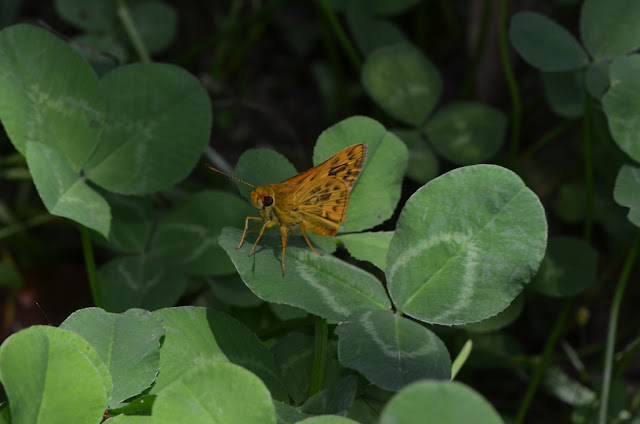 |
| Potanthus flavus |
 |
| Kunugia undans |
 |
| Impatiens Hawk Moth (Theretra oldenlandiae) |
Swallowtails (Papilio machaon hippocrates) are brightly coloured caterpillars and grow up into large yellow butterflies. These are quite common in the park and feed on thistles and the other abundant wildflowers on campus. There are at least four species of swallowtails on campus. Three are mostly black in colour but the only one that sits still for even a moment is this species.
 |
| Swallowtail (Papilio machaon hippocrates) |
 |
| Swallowtail (Papilio machaon hippocrates) |
 |
| Typical Blues Tribe Polyommatini |
 |
| Short-tailed Blue (Everes argiades) |
Pidorus glaucopis is a moth with a red head and dark wings with white stripes
Japanese Oakblue (Arhopala japonica) has brown wings outer with bright blue inner wings.
 |
| Japanese Oakblue (Arhopala japonica) |
 |
| Amata germana ssp. nigricauda |
 |
| Japanese Copper (Lycaena phlaeas daimio) |
 |
| Japanese Copper (Lycaena phlaeas daimio) |
Dagger Moths (Acronicta) are really well camouflaged
 |
| Dagger Moths (Acronicta ) |
 |
| Indian Fritillary (Argyreus hyperbius) |
 |
| Krananda latimarginaria |
Aciagrion migratum is a small blue damselfly.
 |
| Aciagrion migratum |
Atrocalopteryx atrata is a larger type of damselfly with dark wings and dark iridescent green body. They are quite common along the drainage ways in the countryside of Japan and in Kagamino Parks ditches as well.
 |
| Atrocalopteryx atrata |
Orthetrum japonicum
 |
| Orthetrum japonicum |
Orthetrum albistylum ssp. speciosum
 |
| Orthetrum albistylum ssp. speciosum |
Crimson Marsh Glider (Trithemis aurora)
 |
| Crimson Marsh Glider (Trithemis aurora) |
 |
| Asiagomphus melaenops |
Meadowhawks Genus Sympetrum
 |
| Meadowhawks Genus Sympetrum |
 |
| Pied Skimmer (Pseudothemis zonata) |
 |
| White-Tailed Skimmer (Orthetrum albistylum) |
Bees and Wasps:
Japanese Giant Hornet (Vespa mandarinia japonica)
Apis sp.
Hornet (Vespa sp.)
Sphex argentatus ssp. fumosus is a thread waisted wasp that is quite large and fully black in colour.
Furrow Bees (Halictus) live in the ground in the mowed lawn.
Polistes japonicus is a normal looking hornet.
 |
| Polistes japonicus |
 |
| Ichneumonid Wasps (Family Ichneumonidae) |
 |
| Chalybion japonicum |
Large Red-tailed Bumble Bee (Bombus lapidarius)
Genus Lasioglossum
Xyclopa appendiculata
 |
| Xyclopa appendiculata |
My favorite by far is the Tamamushi (Chrysochroa fulgidissima), which is a large jewel beetle. It has a metallic green-blue carapace with copper racing stripes. The underside is brilliant green-copper iridescent metallic. I only found a dead one in the park so no brilliant photos of this species yet sadly.
Oriental Beetle (Exomala orientalis)
 |
| Oriental Beetle (Exomala orientalis) |
 |
| Little Stag Beetle (Dorcus rectus) |
 |
| Little Stag Beetle (Dorcus rectus) |
Asian Lady Beetles (Harmonia axyridis) are black with red spots.
Seven-spotted Ladybird (Coccinella septempunctata)
 |
| Seven-spotted Ladybird (Coccinella septempunctata) |
 |
| Eusilpha japonica |
 |
| Pheropsophus jessoensis |
 |
| Monolepta |
 |
| Themus episcopalis |
Cupreous Chafer (Anomala cuprea)
 |
| Cupreous Chafer (Anomala cuprea) |
Hadda Beetles (Henosepilachna vigintioctopunctata) look like lady beetles but they are almost hairy looking.
 |
| Hadda Beetle (Henosepilachna vigintioctopunctata) |
Japanese Beetles (Popillia japonica) are the most common species on campus and feed on many of the shrubs and vines.
 |
| Japanese Beetle (Popillia japonica) |
Pale and Green Leaf Chafers Genus Anomala
 |
| Pale and Green Leaf Chafers Genus Anomala |
Plesiophthalmus nigrocyaneus
 |
| Plesiophthalmus nigrocyaneus |
 |
| Leptura modicenotata |
Paraglenea fortunei feeds on Boehmeria species that are abundant along the creeks and waterways in the park.
 |
| Paraglenea fortunei |
Argiope amoena is a large garden orbweaver spider with yellow stripes.
 |
| Argiope amoena |
 |
| Argyra Orchard Orbweaver (Leucauge argyra) |
 |
| Neoscona scylloides |
 |
| Orbweaver |
 |
| Orbweaver |
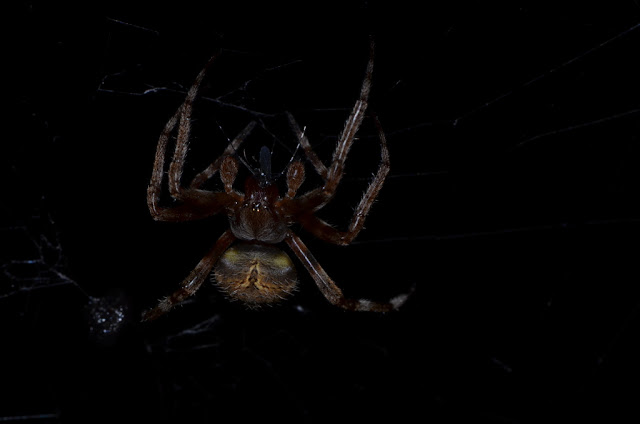 |
| Orbweaver |
Entelegyne Spiders (Infraorder Entelegynae)
 |
| Entelegyne Spiders (Infraorder Entelegynae) |
 |
| Entelegyne Spiders (Infraorder Entelegynae) |
Moluscs:
Pupinella rufa is a small species of snail living on some rocky walls in the park.
 |
| Pupinella rufa |
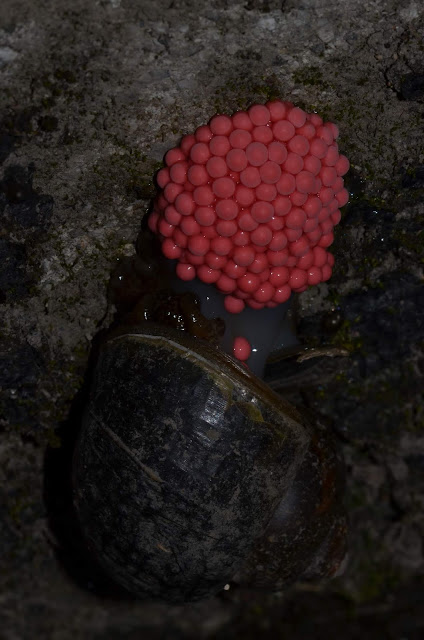 |
| Channeled Applesnail (Pomacea canaliculata) |
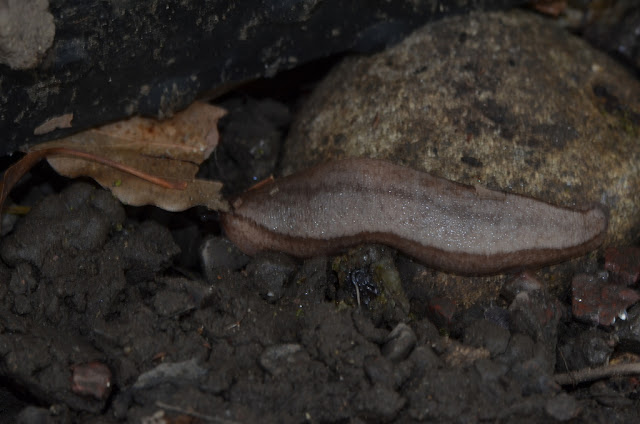 |
| Meghimatium bilineatum |
Helicoid Terrestrial Snails (Euhadra sp.) live on vegetation in the park.
 |
| Helicoid Terrestrial Snails (Euhadra sp.) |
Chinese Red-headed Centipede (Scolopendra subspinipes ssp. mutilans)
 |
| Chinese Red-headed Centipede (Scolopendra subspinipes ssp. mutilans) |
Water Striders (Aquarius)
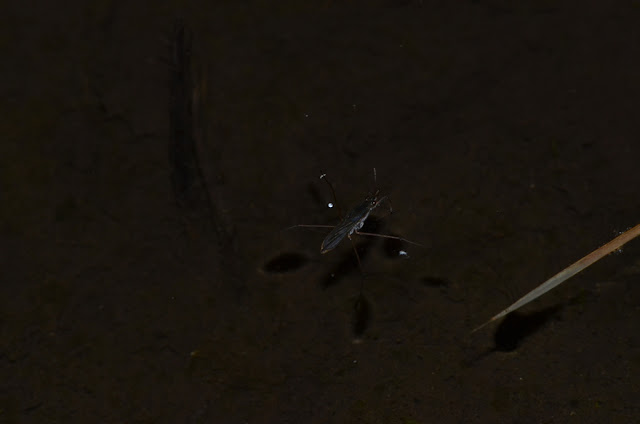 |
| Aquarius |
 |
| Oriental Cockroach (Blatta orientalis) |
 |
| Wood Cockroaches: Family Ectobiidae |
Oriental Longheaded Locust (Acrida cinerea)
 |
| Oriental Longheaded Locust (Acrida cinerea) |
Gampsocleis
 |
| Gampsocleis |
Prionus insularis
Euricania c.f facialis
Riptortus
 |
| Riptortus |
 |
| Episomus turritus |
 |
| Riptortus pedestris |
Sphedanolestes impressicollis is a large black assassin bug with white stripes on its legs.
 |
| Sphedanolestes impressicollis |
Common Pill Woodlouse (Armadillidium vulgare)
 |
| Common Pill Woodlouse (Armadillidium vulgare) |
 |
| Crane Fly (Tipula nova) |
Walking Stick (Phraortes elongatus)
 |
| Walking Stick (Phraortes elongatus) |
 |
| Soldier Flies Family Stratiomyidae |
 |
| Condylostylus longicornis |
House Flies and Allies Family Muscidae
Flesh Flies Family Sarcophagidae
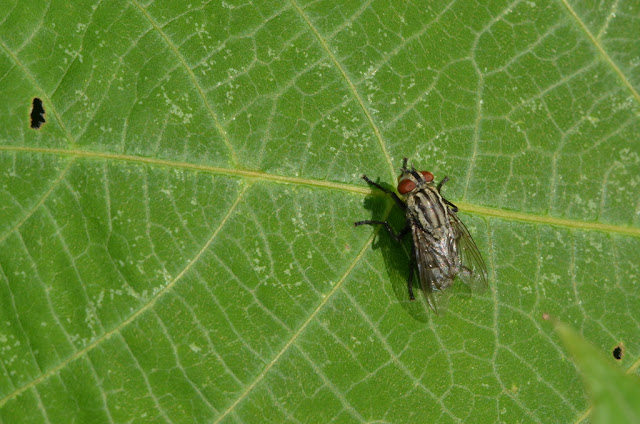 |
| Flesh Flies Family Sarcophagidae |
 |
| Myathropa |
Bean Plataspid (Megacopta cribraria)
 |
| Bean Plataspid (Megacopta cribraria) |
No comments:
Post a Comment